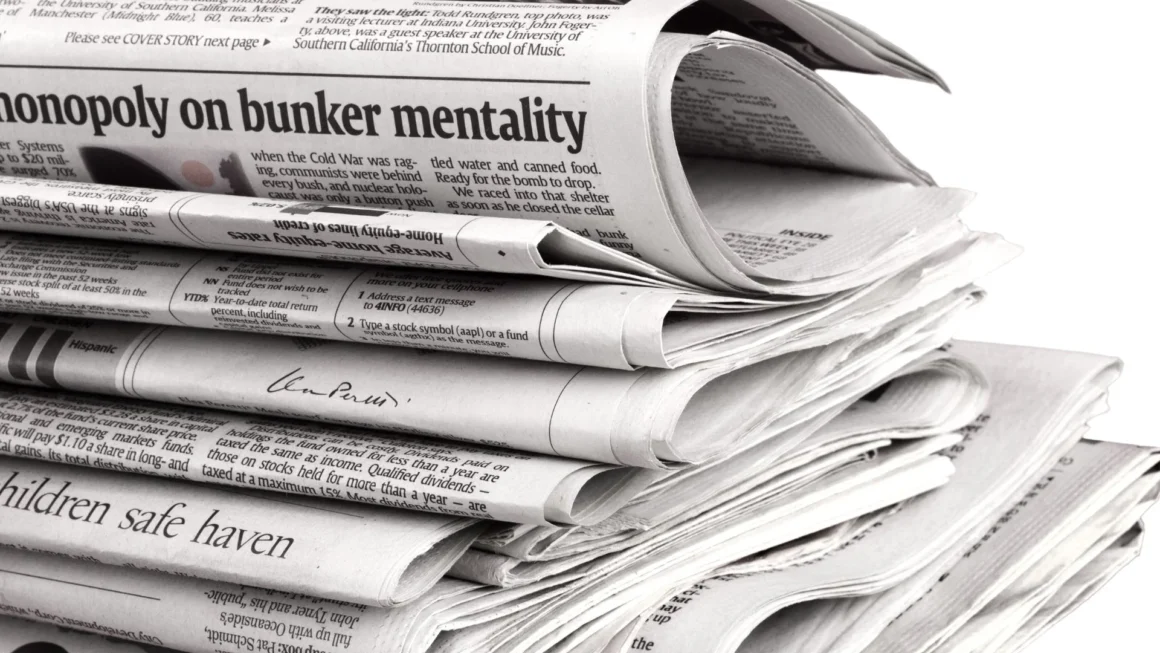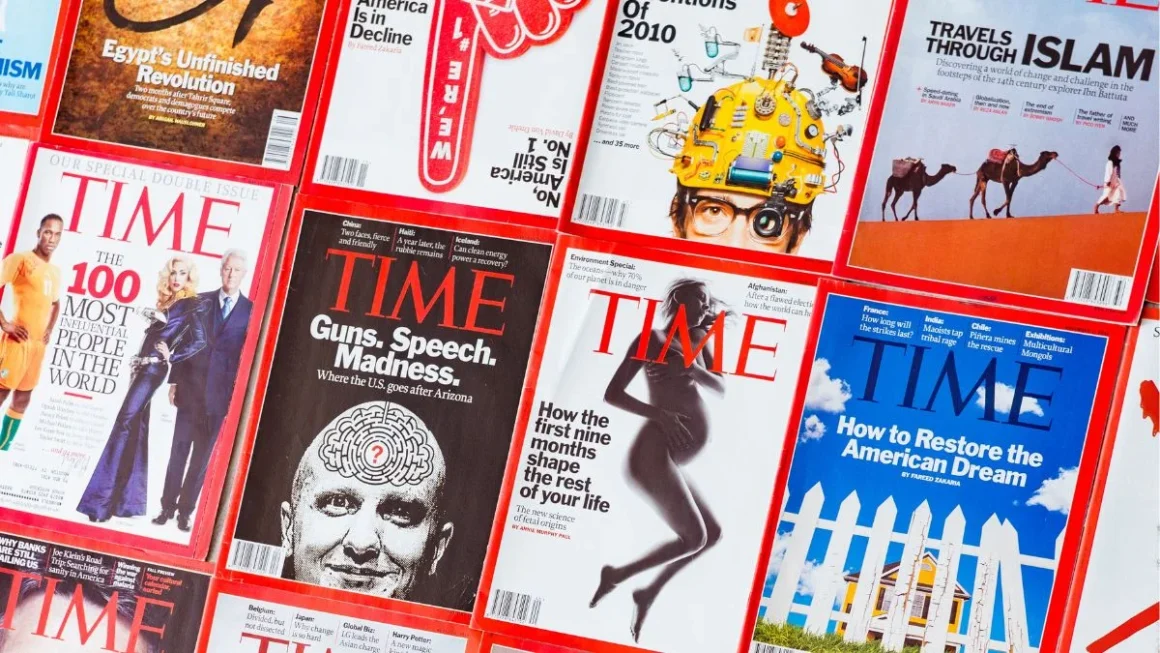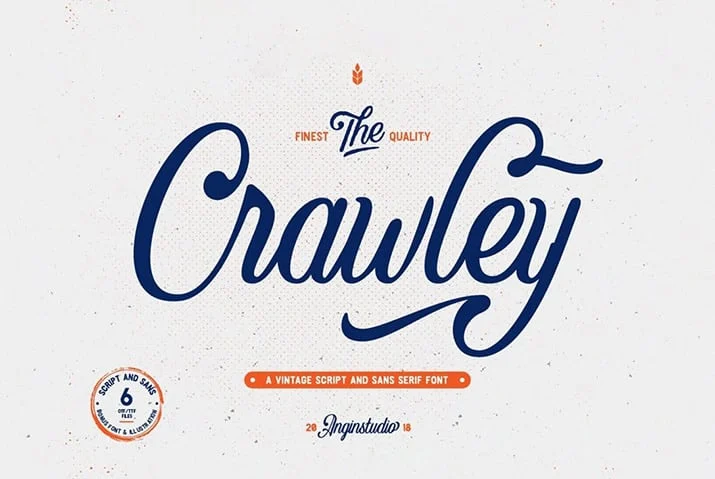It’s important to pick the right font type to convey your message and show off your brand. You can choose which fonts to use in your designs by learning how different fonts work and how they are usually used.
There are many different types of fonts to use to visualize the designs. But today, we will only focus on the 6 most famous and commonly used font types worldwide in big industries.
Most Famous Font Types and Their Perfect Uses with Examples
Here is a list of 6 common font types and how they are used in different fields:
Serif Fonts

In serif fonts, the ends of the strokes have small lines or extensions that stick out. A sense of trust, sophistication, and formality comes with wearing them because they are classic and traditional. Serif fonts are widely used in newspapers and books worldwide.
You can find a great example on two websites – The Guardian for news and Forbes for finance. You can also check out The New York Times, one of the most trusted global news sources, for an example of serif fonts. Many other different types of businesses use serif fonts, such as:
Publishing Industry: If you’re in the publishing business, serif fonts are great for books and newspapers because they make long texts easier to read.

Fashion Industry: Logos and marketing materials for fashion brands look more expensive and classy when they use serif fonts.

Finance Industry: Serif fonts give off an air of stability and dependability, which makes them ideal for banks and other financial institutions.
Sans Serif Fonts

There are no small strokes or serifs at the ends of the letters in sans-serif fonts. People like them because they look clean, modern, and simple. Many different types of businesses use sans serif fonts, such as:
Tech Industry: The clean, modern look of the tech industry goes well with the simple style of sans serif fonts. Such as Google and Apple is tech giants using Sans-Serif fonts for their brand look.

E-commerce Industry: Retail stores often use sans serif fonts to make their logos look clean and modern. Amazon’s logo, for instance, uses the sans serif font Amazon Ember.
Sports Industry: Sans serif fonts can make you feel strong, powerful, and ready to take action, which makes them suitable for sports brands: e.g. Nike & Adidas.
Education: Since sans serif fonts are easy to read on screens, they can be a good choice for school materials. One website that uses this font for their logo is Khan Academy, which is a sans-serif font.
Slab Serif Fonts

Slab serif fonts are a type of serif font that has thick, blocky serifs. People often use their strong, bold looks to get people’s attention. You can use slab serif fonts for:
Headlines and Posters: Slab serif fonts are great for headlines and posters because they look clean and bold.
Unique Branding: To make a brand stand out, slab serif fonts can add a bit of personality and strength, especially to brands aimed at men.
Packaging Designs: Slab serif fonts can help package items stand out on store shelves.
Script Fonts

Because they look like handwriting, script fonts are popular. They can be dressy or casual, and people often use them to show that they are elegant, creative, or feminine. The best way to use script fonts is in small amounts. It can be hard to read large blocks of text in these fonts. These are some fields that might use script fonts:
Wedding Invitations: Wedding invitations with script fonts look more elegant and dressed up.
Greeting Cards for Friends and Family: Script fonts can personalize greeting cards and cozy.
Fashion Industry: Script fonts can make fashion brands’ logos and marketing materials look more girly and classy.
Decorative Fonts

The point of decorative fonts is to stand out and be different. Their ideas are limitless, and they can give a design a unique feel. But decorative fonts can be hard to read, so you shouldn’t use them too often. There may be uses for decorative fonts in the following fields:
Headings and Titles: Decorative fonts can make headings and titles more interesting.
Event Posters: Fonts that look nice can also draw attention to event posters.
Invitations: Using fancy fonts on party or event invitations can make them look more festive.
Scrapbooking: decorative fonts can give books more personality. You can add fun and whimsy to kids’ stuff with these fonts.
Handwritten Fonts

You can make handwritten fonts that look like handwritten letters. A great way to add a personal touch to a design is with them. But handwritten fonts are hard to read, so you shouldn’t use them too often. In the following fields, handwritten fonts may be popular:
Social Media: Posts on social media can feel more casual and personal when they use handwritten fonts.
Marketing Materials: Using handwritten fonts in marketing materials can make them feel more personal and easy to get in touch with.
Product Packaging: Fonts that look like they were handwritten can give product packaging a fun and unique look.
Important FAQs:
What are the different types of fonts?
Fonts are categorized into 6 main types: serif, sans-serif, script, slab serif, decorative and handwritten fonts. Each type has its own unique style and purpose.
How do you choose the right font for your project?
Consider the tone and purpose of your project. For example, a formal document might require a serif font, while a playful design could use a script or decorative font.
What are the best fonts for web design?
Sans-serif fonts like Arial and Helvetica are popular for web design because they are easy to read on screens. These are default fonts and don’t leave any harmful impact on the performance of your website.
How can fonts enhance branding?
Fonts help create a brand identity by conveying the personality and values of a brand. For example, a modern and clean font might be used for a tech company, while a more traditional font could be used for a law firm.
Tips for Using Fonts Effectively
Use hierarchy for emphasis: Make important words stand out using different font sizes and weights.
Limit the number of fonts used: To keep a consistent look, use only two or three fonts.
Keep an eye on cultural and regional factors: Some fonts may work better for some audiences based on cultural norms and preferences.
Font design trends for the future:
Variable fonts: These fonts can change their width, weight, and other properties, which gives designers more freedom and creativity.
Augmented reality and font design: As technology improves, fonts may work with augmented reality, which combines the real and virtual worlds.
Conclusion
Picking the right font is an important part of the design that can greatly affect how people see your work. You can make more interesting and useful designs if you know how to use the different types of fonts in the best way.














